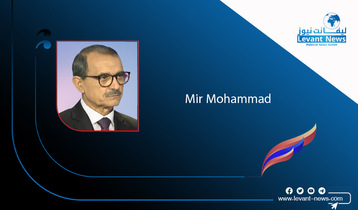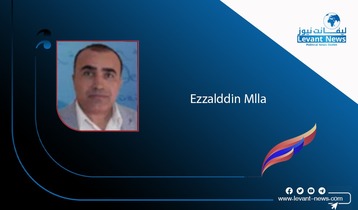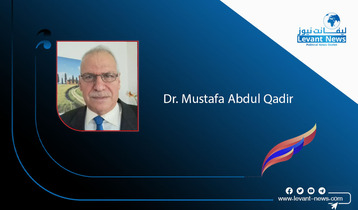-
Iran and America: Negotiations on the Edge of the Abyss

In a notable development, negotiations have begun between the Tehran regime and the United States amid unprecedented internal and external crises threatening the survival of the Iranian regime. The regime is suffering from a collapsing economy, a society seething with anger, diplomatic isolation, and a loss of legitimacy, alongside the rise of organized resistance led by "hotbeds of rebellion" within the country. These conditions raise urgent questions: Why has Supreme Leader Ali Khamenei, who previously refused to negotiate with Washington and described it as "treason," decided to return to the negotiating table? What risks and opportunities do these negotiations hold for the regime and the Iranian people?
Retreat Under Pressure
For years, Khamenei has adhered to the slogan "No negotiations, no surrender," attempting to project an image of a leader defying the West. However, the successive crises have forced him to change his stance. The Iranian economy is suffering from inflation and currency collapse, while society is in a revolutionary state, with recurring popular protests threatening the foundations of the regime. In his speech marking Eid al-Fitr in 2025, Khamenei hinted that popular uprising is the greatest danger he faces. This fear has driven the regime to negotiations, not out of confidence but from a standpoint of desperation and the need to buy time.
This shift has revealed the regime's weakness; its image as an invincible force has collapsed, and Khamenei has faced criticism even from his close supporters. Negotiations, once described by him as "unjust," have now become a tool to alleviate economic and political pressures, but the question remains: Will this step achieve the regime's goals, or will it complicate matters further?
To analyze these negotiations, it is essential to understand the key points governing them:
1. The Regime's Survival is an Absolute Priority:For Khamenei, maintaining the regime is the primary objective. He is willing to make tactical concessions if they ensure the regime's longevity, even if temporary.
2. The Nuclear Program as a Strategic Asset: The regime has no intention of abandoning its nuclear ambitions. Negotiations, as demonstrated by the experience of the 2015 nuclear agreement, are a means to ease sanctions and buy time without making substantial changes to its policies.
3. America's Stance is Firm: Washington aims to dismantle the Iranian nuclear program permanently. President Donald Trump stated on April 15, 2025: "Iran will not have a nuclear weapon, and we will act firmly if necessary."
4. Contradictory Goals: The demands of both parties are completely contradictory. The regime seeks to maintain its nuclear program while easing sanctions, while the U.S. demands a radical solution that guarantees the dismantling of Tehran's nuclear capabilities.
Time is Short
The regime faces a limited timeframe, as the nuclear agreement will expire in two to six months. Trump's statements indicate Washington's refusal to tolerate delays. On April 15, he said, "We set another deadline for next week, and that is enough time. It seems they are trying to stall." This places the regime in a precarious position, having to make a swift decision between conceding or facing international escalation.
The possibilities that these negotiations could lead to are varied, but all carry significant challenges:
1. A Temporary Agreement: The regime accepts reducing its enrichment to 2015 levels with international oversight in exchange for easing sanctions, such as releasing frozen funds. However, this option may not satisfy Washington, which demands a permanent solution.
2. Failure of Negotiations: If both parties stick to their positions, negotiations may collapse, leading to new sanctions, activation of the "snapback" mechanism, or even military threats.
3. A Comprehensive Settlement:Complete dismantling of the nuclear program, which the regime views as "political suicide," as it would ignite internal protests.
4. Stalling: Attempting to prolong negotiations without concessions, but this option is unsustainable under international pressures.
An Uncertain Future
The current negotiations have revealed the depth of the crisis the regime is experiencing. Whether they reach a conclusion or not, they have reinforced internal divisions and showcased the fragility of leadership. Every option facing the regime carries serious repercussions: conceding could ignite an uprising, while escalation could expose it to sanctions or military intervention. In the end, negotiations appear to be just a temporary stop in a larger trajectory.
Iran today is entering a critical phase. The transformations over recent years, from popular protests to organized resistance, indicate that the fate of the regime will not be determined at negotiating tables, but rather in the streets of Tehran and other Iranian cities. The power of the people, supported by "hotbeds of rebellion" and organized resistance, will shape the future, regardless of the outcomes of these negotiations.
Hasan Mahmoudi
You May Also Like
Popular Posts
Caricature
BENEFIT Sponsors BuildHer...
- April 23, 2025
BENEFIT, the Kingdom’s innovator and leading company in Fintech and electronic financial transactions service, has sponsored the BuildHer CityHack 2025 Hackathon, a two-day event spearheaded by the College of Engineering and Technology at the Royal University for Women (RUW).
Aimed at secondary school students, the event brought together a distinguished group of academic professionals and technology experts to mentor and inspire young participants.
More than 100 high school students from across the Kingdom of Bahrain took part in the hackathon, which featured an intensive programme of training workshops and hands-on sessions. These activities were tailored to enhance participants’ critical thinking, collaborative problem-solving, and team-building capabilities, while also encouraging the development of practical and sustainable solutions to contemporary challenges using modern technological tools.
BENEFIT’s Chief Executive Mr. Abdulwahed AlJanahi, commented: “Our support for this educational hackathon reflects our long-term strategic vision to nurture the talents of emerging national youth and empower the next generation of accomplished female leaders in technology. By fostering creativity and innovation, we aim to contribute meaningfully to Bahrain’s comprehensive development goals and align with the aspirations outlined in the Kingdom’s Vision 2030—an ambition in which BENEFIT plays a central role.”
Professor Riyadh Yousif Hamzah, President of the Royal University for Women, commented: “This initiative reflects our commitment to advancing women in STEM fields. We're cultivating a generation of creative, solution-driven female leaders who will drive national development. Our partnership with BENEFIT exemplifies the powerful synergy between academia and private sector in supporting educational innovation.”
Hanan Abdulla Hasan, Senior Manager, PR & Communication at BENEFIT, said: “We are honoured to collaborate with RUW in supporting this remarkable technology-focused event. It highlights our commitment to social responsibility, and our ongoing efforts to enhance the digital and innovation capabilities of young Bahraini women and foster their ability to harness technological tools in the service of a smarter, more sustainable future.”
For his part, Dr. Humam ElAgha, Acting Dean of the College of Engineering and Technology at the University, said: “BuildHer CityHack 2025 embodies our hands-on approach to education. By tackling real-world problems through creative thinking and sustainable solutions, we're preparing women to thrive in the knowledge economy – a cornerstone of the University's vision.”
opinion
Report
ads
Newsletter
Subscribe to our mailing list to get the new updates!





















